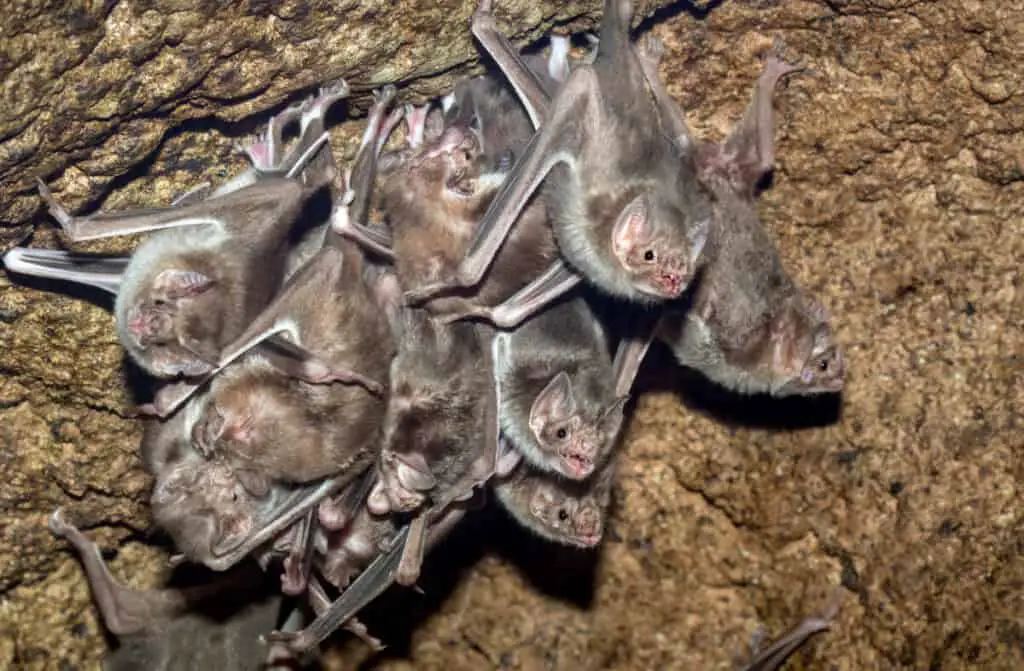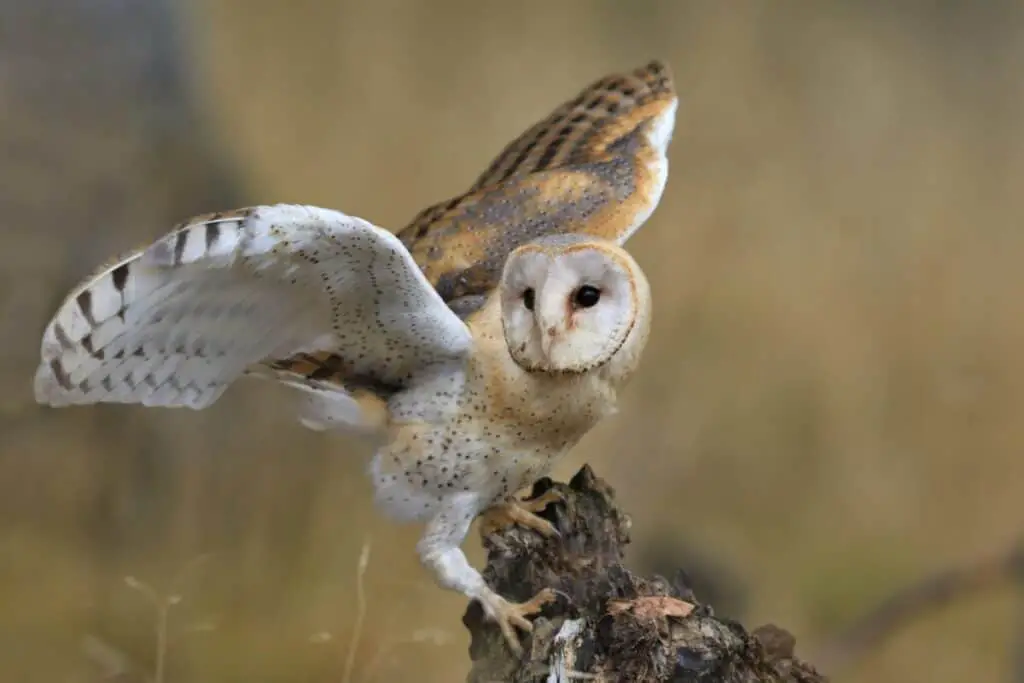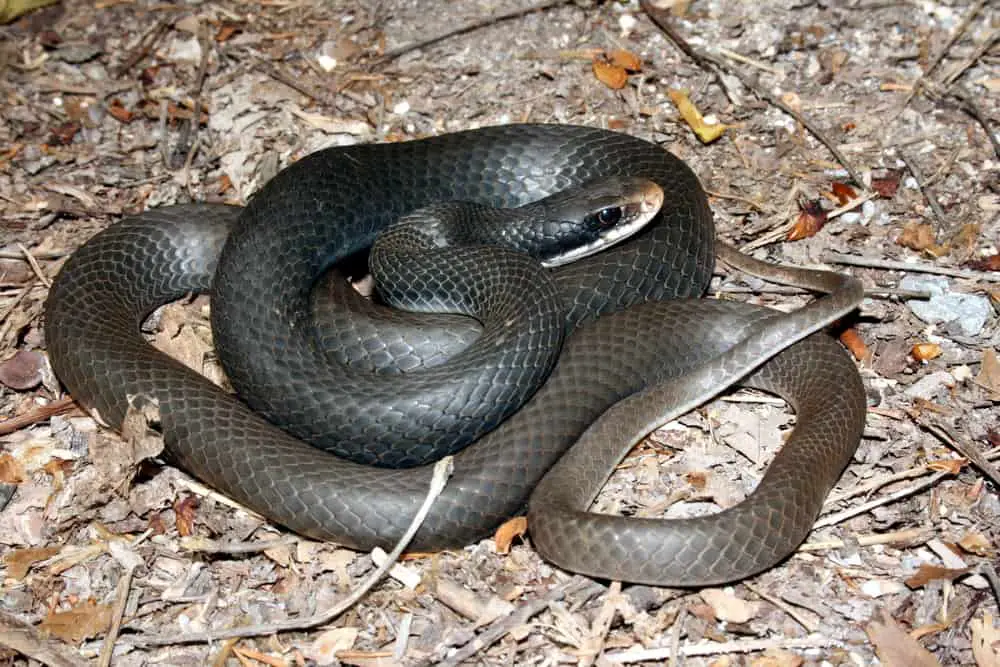Bats are fascinating creatures that have been the subject of much scientific research and popular interest. With over 1,400 species distributed worldwide, bats are one of the most diverse groups of mammals on Earth. Despite their unique adaptations for flight and echolocation, bats face a number of threats in the wild, including predation by other animals.
The predators of bats vary depending on geographic location and habitat type. In some regions, large birds such as owls and hawks may prey upon bats while they are flying or roosting. Other aerial predators include falcons, eagles, and even some snakes that can climb trees to reach bat colonies.
On the ground, small carnivores like foxes, raccoons, and domestic cats may also hunt bats either at night or during daylight hours when they are resting in crevices or under leaves. Understanding the natural enemies of bats is crucial for conservation efforts aimed at protecting these important mammalian pollinators from harm.

The Diversity Of Bat Species Worldwide
Bat species are widely distributed across the globe, with more than 1,400 different types identified thus far. They can be found in various habitats ranging from deserts to forests and even urban areas. Bats have developed unique characteristics that enable them to survive in diverse ecosystems.
For instance, some species can hibernate during winter, while others migrate long distances when food is scarce. The migration patterns of bats depend on their specific habitat requirements. Some bats will travel hundreds or thousands of kilometers each year to reach breeding sites or suitable foraging grounds.
These movements help maintain healthy populations by promoting gene flow between subpopulations and reducing competition for limited resources within a single area. However, human activities such as deforestation and climate change pose significant threats to bat habitats and disrupt their natural migration patterns.
The Sensory World of Common Vampire Bats: How Good Are Their Senses?
Threats To Bats In The Wild
Apart from natural predators such as owls, hawks, and snakes, bats face a range of threats that have caused their population decline.
One major threat is the loss and fragmentation of their habitats due to human activities. Deforestation, urbanization, mining, and agriculture are some of the human impacts that have adversely affected bat populations worldwide. These activities reduce the availability of roosting sites for bats and limit their access to food sources.
Another significant threat to bats is disease outbreaks. When these viruses spill over into humans or other animals through bat bites or consumption of contaminated meat, they can cause severe illness or death.
The destruction of bat habitats increases the likelihood of contact between humans and infected bats, leading to increased transmission rates. As such, conservation efforts aimed at preserving bat habitats are crucial in mitigating both direct and indirect threats to bat populations.
Geographic Variations In Bat Predators
Threats to bats in the wild are numerous and varied, ranging from habitat loss and fragmentation to white-nose syndrome. However, one of the most significant threats to bat populations is predation by natural predators.
Bats have evolved a variety of adaptations that enable them to evade or defend against their predators, but these strategies may not be effective against all types of predators.
Regional differences play an important role in determining which species serve as bat predators. For example, in North America, owls are major bat predators whereas in Australia, snakes are more commonly known for preying on bats. In South America, birds of prey such as falcons and hawks pose a significant threat to many species of bats.
These regional variations can be attributed to differences in predator communities across different habitats and biomes. Furthermore, evolutionary adaptations have allowed some bat species to avoid certain types of predators altogether; for instance, some cave-dwelling bats have developed echolocation calls that are less detectable by predatory birds.
However, other species may be particularly vulnerable due to their small size or roosting habits. Understanding these regional variations and evolutionary adaptations is essential for developing effective conservation strategies aimed at reducing predation pressure on bat populations.
The Little Red Flying Fox’s Predators Exposed: Unveiling the Threats

Predatory Birds Of Bats
Bats are known to be preyed upon by a variety of predatory birds. These birds have developed specialized hunting techniques that allow them to capture bats in flight or while they roost during the day.
One example is the Barn Owl, which has adapted its hearing system to locate and catch flying bats at night. Other species such as the Peregrine Falcon and Cooper’s Hawk use their speed and agility to chase down and capture bats mid-flight.
The increased use of pesticides in agriculture and habitat loss due to human activities have led to declines in bat populations worldwide. As a result, predatory bird populations may also suffer as they lose an important food source.
This highlights the importance of conservation efforts aimed at protecting not only bats but also their predators, ensuring ecological balance within our ecosystems.
Examples of predatory birds that hunt bats include:
- Barn Owls
- Peregrine Falcons
- Cooper’s Hawks
- Red-tailed Hawks
- Northern Goshawks – and many species of eagles.

Snakes
Snakes are another group of aerial predators that preys on bats.
A few snake species with arboreal tendencies like the green tree python, boomslang, and emerald tree boa can climb trees to reach bat colonies concealed within foliage or cavities.
Most commonly though, ground-dwelling snakes such as racer snakes and king cobras hunt foraging bats by ambushing them at night along flight paths or in roost sites close to the ground level.
With their lightning-fast reflexes, these reptiles can quickly grab a passing bat using their fangs before swallowing it whole.

Ground-Based Bat Predators
Aerial predators beyond birds are not the only threats faced by bats. Ground-based bat predators also exist, and they pose a significant threat to these flying mammals. These nocturnal predators have developed unique hunting techniques that allow them to catch their prey with ease.
Among the most common ground-based bat predators are snakes, raccoons, and domestic cats. Snakes use their exceptional sense of smell to locate roosts where bats rest during the day. Once they find a suitable spot, snakes patiently wait for their prey to return at night before striking swiftly and silently.
Raccoons and domestic cats, on the other hand, rely on speed and agility to hunt bats in flight or while resting on trees or buildings. They stalk their prey quietly until they get within range before launching an attack.
Ground-based bat predators present a constant danger to bats worldwide. While aerial predators may have more impressive hunting techniques such as diving from great heights or catching prey mid-air using specialized claws or beaks, ground-based hunters should not be underestimated given how effectively they can ambush and capture unsuspecting prey like bats even under cover of darkness.
Nocturnal Predators:
- Ground-based hunters pose a bigger threat than many assume.
- Their ability to hunt silently makes it difficult for bats to detect incoming attacks.
Bats must face both airborne and land-bound threats every day in order to survive. Hunting either involves attacking bats in mid-flight or while resting. Bat hunting techniques include snakes’ sense of smell, which allows them to locate bat roosts easily.
Conservation Efforts For Protecting Bats From Harm
The protection of bats is crucial due to the important role they play in pollination, seed dispersal and insect control. One of the main threats faced by bats are predators, which include birds of prey, snakes, raccoons and domestic cats. However, human activities such as deforestation and habitat loss also pose a significant threat to bat populations.
To mitigate these threats and promote bat conservation efforts have been put in place worldwide. Bat roosting behavior has been studied extensively to understand their needs and preferences when it comes to habitats. This information has helped create artificial roosts that mimic natural environments and provide safe spaces for bats to live and reproduce. Additionally, cave systems have been protected or restored as they serve as critical breeding sites for many species of bats.
Table: Conservation Efforts for Protecting Bats from Harm
| Conservation effort | Description |
|---|---|
| Artificial Roosts | Man-made structures designed to replicate natural habitats where bats can rest or breed safely |
| Cave Protection/Restoration | The preservation or restoration of caves used by bats for hibernation or breeding purposes |
| Education Programs | Educational initiatives targeted at raising awareness about the importance of bat conservation |
In conclusion, protecting bat populations through conservation efforts is essential for maintaining ecosystem balance. These programs not only help preserve the well-being of endangered species but also ensure that ecological services provided by bats continue uninterrupted. As we learn more about bat behavior patterns, better strategies will be developed towards promoting their long-term survival in our changing world.
Conclusion
Bats, a diverse group of mammals, face numerous threats in the wild. Predation is one such threat that varies geographically and by species.
Birds are known to be aerial predators of bats, but there are other predators as well. Ground-based predators like snakes pose a significant risk to some bat populations.
Conservation efforts have been initiated worldwide to protect these important animals from harm. Measures include creating safe habitats for roosting and feeding while also limiting human activities that can disturb their natural habitat.
Educating communities on the importance of bats in maintaining ecological balance is another crucial step towards protecting them from predation and other dangers they may encounter in their environment. By taking these steps, we can help ensure the survival and prosperity of these fascinating creatures for generations to come.

